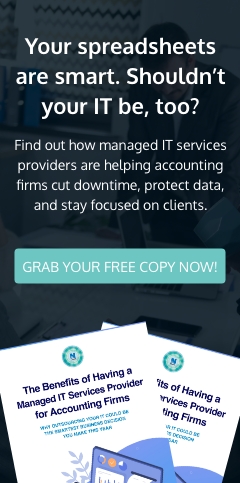
For many small or medium-sized businesses (SMBs) like yours, the perceived complexity of an IT audit can make them seem like a daunting burden. But if you know what to do and you have a trusted IT partner to assist you, then preparing for an IT audit need not be that stressful.
What is an IT audit? Simply put, you review your technology systems to identify risks, inefficiencies, and areas lacking in security and/or compliance. An IT audit is an opportunity for your business to tighten your system’s digital defenses, boost performance, and keep your operations running smoothly.
Here’s a step-by-step guide to getting ready for an IT audit.
1. Understand the purpose of the audit
Start by clarifying your audit’s goals. Is the focus of the audit on cybersecurity, regulatory compliance, or internal process improvements? With a well-defined objective, you can pinpoint the systems and processes that need the most attention.
For example, if your business is in healthcare or finance, your audit may focus more on data privacy and regulatory compliance. But if you seek to improve internal IT practices, you can concentrate on policies, backups, and performance.
2. Take inventory of your IT assets
List all your digital assets, including computers, servers, mobile devices, cloud services, software licenses, and even employee access credentials. The more detailed your inventory, the better that auditors can understand your current environment and identify unprotected systems.
Make sure your records are current and include:
- Device types and models
- Serial numbers and assigned users
- Installed software and their versions
- Subscription renewals and expiration dates
If your setup includes remote or hybrid teams, then include the devices they use at home that are allowed access to your network.
3. Review security policies and access controls
Auditors always check how well your business protects sensitive data. So, make sure you review and update your security policies, especially the following:
- Password policies (e.g., expiration timelines, complexity requirements)
- Implementation of multifactor authentication
- User access privileges (i.e., who has access to what systems?)
SMBs often overlook what’s known as “access creep” — that’s when employees continue to retain access to systems they don’t need anymore. To reduce the risks of access creep, regularly audit and remove unnecessary permissions.
4. Ensure backups and recovery plans are in place
Data loss, whether caused by cyberattacks, hardware failures, or accidental deletions, can bring businesses to a halt. Auditors will want to see that your business takes data backup seriously, so make sure to do the following:
- Establish a consistent schedule to back up all critical business data.
- Store your backups securely, ideally both on site and in the cloud.
- Regularly test your recovery plan to ensure it works.
Here’s a tip: you can partner with a managed IT services provider (MSP); their experts will make sure your backups are correctly handled.
5. Organize your documentation
IT audits will go smoother and faster if your documents are organized and complete. When preparing for an audit, gather the following documents:
- Network diagrams
- IT policies and procedures
- Security awareness training logs
- Compliance reports (if applicable)
- Vendor contracts and service level agreements (SLA)
Access to these documents should be easy but secured with proper permissions.
6. Run a pre-audit or internal review
Conduct an internal review before the official audit. You can even have your partner MSP tailor a pre-audit review for you. This way, you can uncover and fix problems before they become bigger. The review allows you to identify:
- Missing updates or patches
- Inactive user accounts
- Outdated software licenses
- Gaps in documentation
Better for you to catch the issues rather than the inspectors during a formal audit.
7. Educate your team
Finally, don’t forget the human factor. You need to demonstrate that you have a security-first culture in your company. Your employees should understand the basics of cybersecurity and their roles, including knowing how to spot phishing emails, how to report suspicious activity, and how to protect their sensitive data.
You may want to conduct a short training session or refresher for your staff leading up to the audit. Your partner MSP can help facilitate these sessions or recommend resources.
An IT audit provides you with a clearer view of your IT infrastructure and the risks you face, and it helps strengthen your business overall.
But if you still feel overwhelmed with an incoming audit, relax. We at NetQuest are ready to help. Our team specializes in building secure, efficient, and compliant IT systems that fit the needs of SMBs in Baltimore, Annapolis, and Columbia. And if you need to be audit-ready, contact us for a free security assessment.


